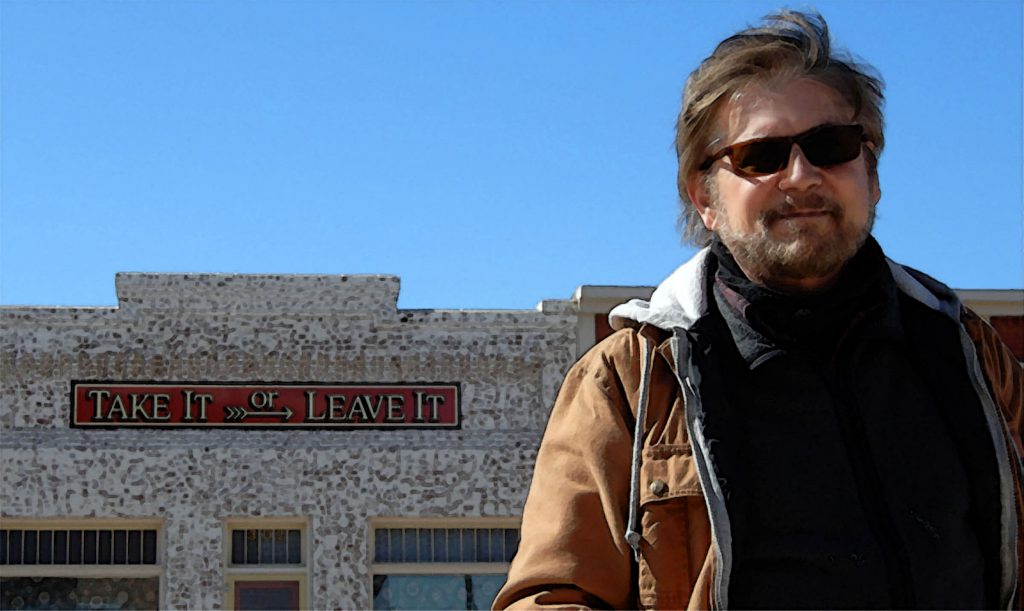
Over a year ago, on May 14, 2018, I filed a “Freedom of Information Act” request (FOIA) with the Bureau of Land Management. I was interested in obtaining public documents related to the controversial “Recapture Canyon Protest Ride” on May 10, 2014. In fact, the story goes back even further, to 2006, when two San Juan County residents were accused and convicted of building an illegal ATV trail across public lands and damaging archaeological sites. The trail was closed by the BLM, subject to review.
Seven years later, the trail was still closed and local officials grew impatient with the process. Among those officials was county commissioner Phil Lyman. In March 2014, Lyman proposed a gathering of citizens to protest the BLM’s continued closure of the trail. The subsequent ride incited passions by environmentalists and multiple-use advocates across the country.
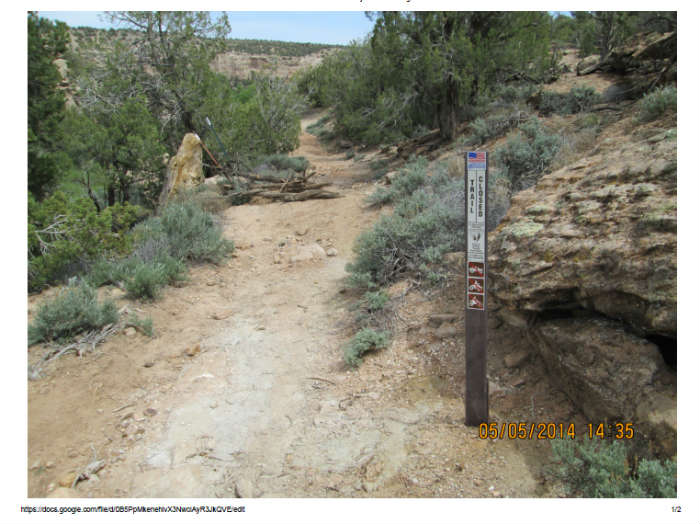
In 2019, the Recapture controversy still stirs anger and debate on both sides of the issue. Over the years, I’ve heard conflicting accounts of those events. I thought that a thorough examination of the public record might answer some questions.
In my FOIA request, I asked for:
All documents and correspondence stemming from:
1) allegations against Kenneth Brown and Dustin Felstead, re: environmental and archaeological damage in Recapture Canyon that culminated in a January 13, 2007 guilty plea by both men to destruction of federal property.
2) the protest ride led by San Juan County Commissioner Phil Lyman in Recapture Canyon on May 10, 2014, that led to charges of conspiracy and operating OHVs on public lands, and ultimately a jury conviction of Lyman and San Juan County resident Monte Wells.
Relevant documents, field reports, incident reports, photographic documentation are requested from the BLM, as well as related correspondence between BLM and state and local governments (sheriiff, county commissioners), other federal agencies, non-profit organizations including but not limited to The Southern Utah Wilderness Alliance (SUWA), Great Old Broads for Wilderness, Grand Canyon Trust, San Juan Public Entry and Access Rights (SPEAR), Utah Dine’ Bikeyah, the Inter-Tribal Coalition, other Tribal organizations,
I also requested any correspondence from a variety of individuals connected in some way to the Recapture Protest.
And finally I asked for:
“a specific inventory of archaeological artifacts that were damaged, destroyed or otherwise disrupted by both the 2005 and 2014 incidents, including photographic documentation.”

An initial letter from BLM indicated that my request was in the “complex” category and would “require 21-60 days for processing.” BLM advised me they hoped to complete it by August 20, 2018. I was assigned a reference number: UT- 2018-64.
It seemed like a fairly cut-and-dried process. But at the end of 90 days, I had not received any further updates and I contacted the BLM’s Monticello office. I was informed that, “Your FOIA request is at our state office being finalized and you should get a response shortly.”
I assumed he meant the documents would be forthcoming. But nothing happened. So I contacted BLM again. This time they explained that:
“The Utah BLM State Office has the majority of the documents for your FOIA request. They presently are working on 61 open FOIA requests and are scheduled to begin to work on your request on October 1, 2018. The review process to make sure everything is releasable will take some effort so at this point I can not give you as estimate on when your request will be completed. Because of the volume of documents you will receive documents in installments.”
No installments arrived.
Three months later, I wrote the Utah BLM-FOIA director. I included the above information and added:
“Now it is almost mid-November, almost six months after I filed my initial request, and I have received nothing. If it was almost complete and just needed to be “finalized” almost three months ago, can you tell me what is the cause of this delay and can you provide me with an estimate of when it may finally be ready to send to me?”
The BLM-FOIA director responded:
All responsive records to your May 14, 2018, FOIA request are in the FOIA Office and undergoing review. I’m sorry the processing of your request has taken so long.
She explained that they’d been waiting to hear from a former BLM official, who finally sent 773 emails in October…
“…It has been extremely time-consuming sorting through 773 emails to determine which are responsive. I am currently working on that task specifically. Additionally, we also have 330 responsive law enforcement records to review. I have assigned our other FOIA Specialist to that specific task, reviewing and, where applicable, redacting sensitive data. Once the FOIA review of the law enforcement portion of the records is complete, we are required to send them (law enforcement records only) with any/all proposed redactions to BLM-Washington (Office of Law Enforcement and Security – OLES) for a second review of the records to ensure we are not releasing any sensitive information/data. Unfortunately, this process generally takes a month or more and we must wait for their response before moving forward. Lastly, we have a total of 84 additional documents from various BLM employees in the Moab and Monticello field offices that are responsive to your request and will need to be reviewed. We plan to review those documents while the Washington OLES review is being conducted. Once all documents to include the law enforcement records, have been reviewed and approved, the entire response package will go to our local Solicitor’s Office for legal review. While we cannot give you a target completion date at this time, we will be happy to provide you with on-going updates of our progress if that is helpful. Once we feel more comfortable with our time table, we will email you with our target completion date. Please know that we are dedicating 2 full time FOIA Specialists to processing your request.
I thanked her for the update and added:
“…your detailed explanation is all I needed to understand how difficult the process has become, especially when you explained the situation with the retired BLM staffer. Thanks again for taking the time to write. If you could give me an update on the progress of my request, I would be especially grateful.”
But I never heard from her again. On March 4, 2019, I wrote again:
“It has been almost four months since your last correspondence. And it has been seven months since… the BLM office in Monticello notified me that, ‘Your FOIA request is at our state office being finalized and you should get a response shortly.’ I was also instructed that the information I requested would be sent to me in sections…is it possible to send me what’s been approved so far?”
The same day I got a reply. They informed me that the BLM-FOIA director I’d been corresponding with…
“…has now retired from the BLM. We apologize that you have not been updated on the status of your FOIA request….Your request has been assigned to another FOIA Specialist to continue the review of responsive documents and, where applicable, redact sensitive data.”
My new BLM contact responded:
“We apologize for our slow response. We understand your frustration, and you’re right that we failed to meet the 60-day deadline of August 21, 2018. Due to our large backlog of late FOIA requests (64 at the time of your request), we were not able to start reviewing the records related to your request until November 15, 2018. We are still in the process of reviewing these 459 responsive documents. This is taking so long because we have to track down missing attachments to multiple responsive documents provided by the Field Office, and because there are a considerable number of lengthy documents with large amounts of sensitive cultural resource information requiring line-by-line redaction
“We do not have a target completion date at this time but will be happy to provide you with on-going updates of our progress.”
I asked why the BLM had been so wildly off-target when they predicted I’d receive the requested documents in 90 days. On March 11, BLM explained:
“…we have moved your FOIA request to the front of the Complex Track and hope to have our FOIA Office review done within the week. We will notify you when we have sent the Law Enforcement Office records to Washington, D.C., and the cultural resource documents to the State Office Archaeologist for review. Once received, we will notify you and immediately prepare our response for a legal review with the Solicitor’s Office, which generally does not take more than a week.”
On March 15, BLM wrote again:
“Our FOIA Office has completed its review of the documents responsive to your request. All law enforcement documents have been sent to our Washington, D.C., Law Enforcement Office, and all documents with sensitive cultural resource data (Ex. 3) are under review by our State Archaeologist.”
Then March 28…
“Good morning Mr. Stiles. As of today, we have not yet heard back from the WO (Washington Office?) Law Enforcement. We will continue to update when the status of your request changes. Thank you for your patience.”
I replied, “Can you tell me how long it normally takes WO law enforcement to respond?
BLM responded, “We have tried to contact LE and have not heard back from them as of today. We do not have an anticipated timeframe.”
I admit, I started getting a tad testy.
“Thanks for the information, but since this process has been going on for almost a year now, I’m having a difficult time understanding the delay. The FOIA is ready now, is that correct? And only needs to be reviewed? BLM contacted the WO LE two weeks ago and they simply do not respond? Do they even acknowledge receipt of the documents? If LE doesn’t respond in a reasonable amount of time, what is the next step? What does the BLM consider a reasonable amount of time to wait without even knowing if they received the documents for review? …This process is starting to become newsworthy in and of itself. I’d like to hope that this matter will finally be resolved in the next couple of weeks.”
The next morning…
“Good morning. WO Law Enforcement has finished their review of the responsive documents. This FOIA request will now finish routing here at the Utah State Office for signature.”
Three weeks passed. Then on April 17…
“Good morning. I wanted to touch base with you on your FOIA request. The last e-mail on 03/29/2019, I mistakenly advised you that your FOIA package was in routing for the State Director’s signature when in actuality your package was sent to the Solicitor’s office for legal review. We called our attorney this morning for a status update. He indicated that he is approximately 1/3 of the way through his review process…”
Then…April 25…
“Good afternoon. I wanted to let you know that all documents have been reviewed by our Solicitor. Your file is currently being routed through our Utah State Office for final signature….Although I cannot be specific, I would not expect it to take more than 1 week.
Three weeks later, on May 21, I wrote:
“On April 25, you told me that the FOIA package for documents that I requested a year ago, was now finally “routing through the Utah State Office for signature” and that you did “not expect it to take more than 1 week.” This is May 21…it’s been almost four weeks. Can you please tell me what is causing the most recent delay?”
May 22, from BLM:
“Good morning Mr. Stiles. I have been tracking your FOIA request through the surnaming process. It is currently on the State Director’s desk for signature.”
And finally, on May 28, 2019…
“I am pleased to let you know that your request was mailed today, via USPS Certified Mail.”
On June 2, 2019, one year and nineteen days after I filed my request, an envelope with a compact disk and accompanying letter arrived at my post office box in Monticello. The letter began ominously, “This is our final response to your May 14, 2018 FOIA request.” It was downhill after that.
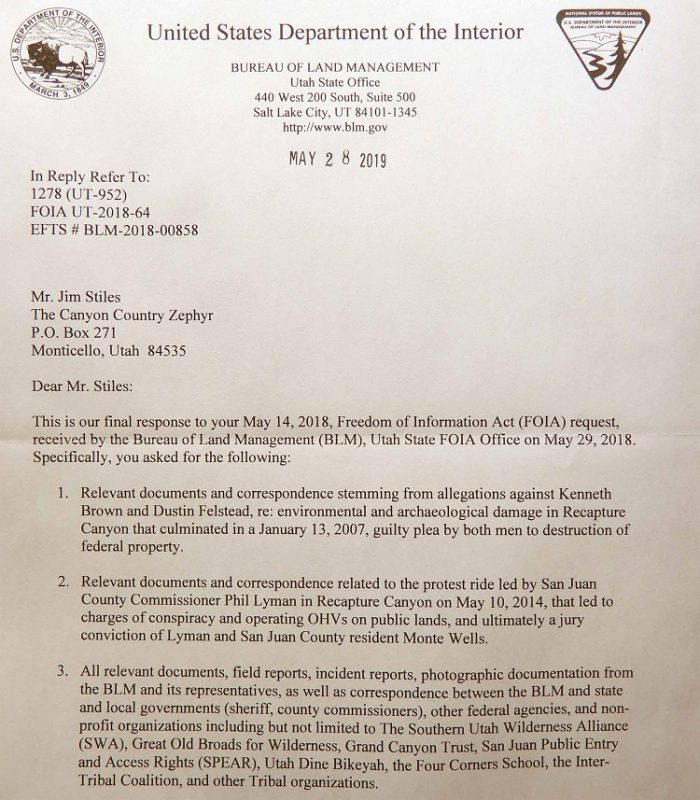
Edwin Roberson, the BLM state director noted that the compact disk contained “458 documents (3.456 pages) of responsive records. Since we redacted information under Exemptions 3,4, 5, 6, and 7 of the FOIA, we consider our response to be a partial denial of your request.”
Roberson went on to explain the exemptions in some detail. Here is a verbatim summary of those exemptions.
Exemption 3 of the FOIA allows for the withholding of information prohibited from disclosure by another federal statute. Under the authority of the Archaeological Resources Protection Act of 1979 and/or the Paleontological Resources Preservation Act, the BLM invoked Exemption 3 in copious instances to protect the nature and location of cultural, archaeological, and paleontological resources.
Exemption 4 of the FOIA allows for the withholding of “commercial or financial information obtained from a person [that is] privileged or confidential.”
Exemption 5 of the FOIA protects information in “inter- and intra-agency memoranda or letters, which would not be available by law to a party…in litigation with the agency.” In accordance with Exemption 5, we withheld various types of information under four separate and distinct privileges, as described herein. These privileges are the 1) Deliberative Process Privilege; 2) Attorney-Client Privilege; 3) Attorney Work Product Privilege; and 4) Confidential Commercial Information Privilege.
Deliberative Process Privilege. This Exemption 5 privilege prevents injury to the quality of agency decisions. The protection of pre-decisional and deliberative documents encourages open and frank discussions on matters of policy between subordinates and superiors; guards against premature disclosure of proposed policies before they are finally adopted; and eliminates the possibility of public confusion that might result from disclosure of reasons and rationales that were not in fact ultimately the grounds for the BLM’s action.
Attorney-Client Privilege. This Exemption 5 privilege concerns confidential communications between the agency and its attorney, including facts divulged by a client to the attorney and opinions given by an attorney to the agency based upon, and reflecting, those facts.
Attorney Work-Product Privilege. This Exemption 5 privilege protects from disclosure any materials prepared by or for a party or its representative…in anticipation of litigation or for trial.
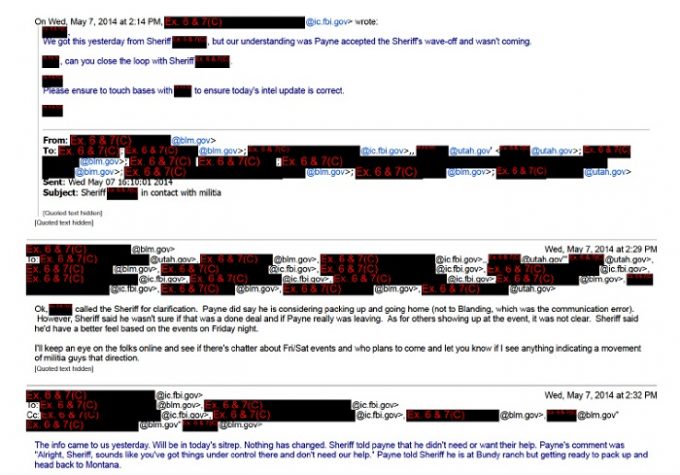
Confidential Commercial Information Privilege. When the government enters the marketplace as an ordinary commercial buyer or seller, the government’s information is protected under the commercial information privilege if it is sensitive information not otherwise available, and disclosure would significantly harm the government’s monetary functions or commercial interests.
Exemption 6 of the FOIA protects information about individuals when the privacy interest of the individual outweighs the interest of the public. When appropriate and subject to a case-by-case analysis, Exemption 6 allows the BLM to withhold the names and other personal information of individuals where disclosure “would constitute a clearly unwarranted invasion of personal privacy.”
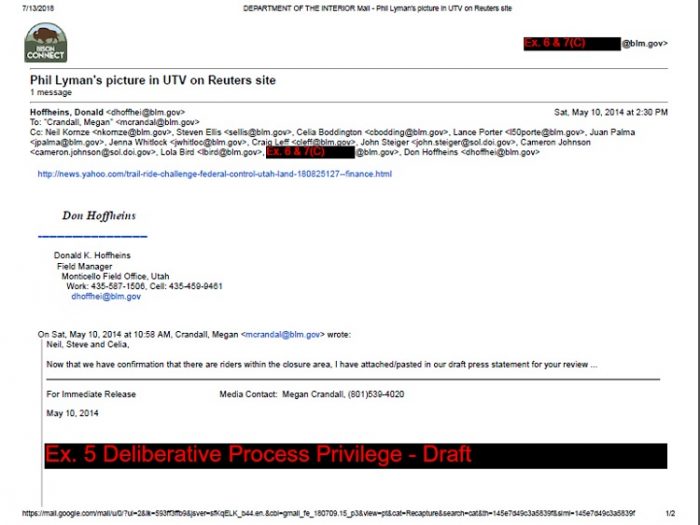
Exemption 7 of the FOIA protects from disclosure records or other information compiled for law enforcement purposes, but only to the extent that the production of such law enforcement records or information (A) could reasonably be expected to interfere with enforcement proceedings, (B) would deprive a person of a right to a fair trial or an impartial adjudication, (C) could reasonably be expected to constitute an unwarranted invasion of personal privacy, (D) could reasonably be expected to disclose the identity of a confidential source…, (E) would disclose techniques and procedures for law enforcement investigations or prosecutions, or would disclose guidelines for law enforcement investigations or prosecutions if such disclosure could reasonably be expected to risk circumvention of the law, or (F) could reasonably be expected to endanger the life or physical safety of any individual…In accordance with this exemption, we withheld information under 7(C) and 7(E).
And finally, what I thought must have been a vital piece of evidence in the prosecution of both the 2005 and 2014 incidents did not exist. Roberson advised me that:
“Concerning Item 5 of your request, we do not have a specific inventory list of the archaeological artifacts that were damaged, destroyed, or otherwise disrupted by either the 2005 and/or 2014 incidents, including photographic documentation.”
If there wasn’t a specific list of damaged artifacts, how was the BLM able to establish the cost of the damage that was inflicted?
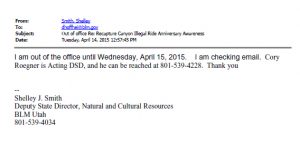
Otherwise, BLM had no issues regarding my request (!)
Ultimately, much of the information I sought was deleted or partially redacted. BLM was judicious when it came to including emails from BLM staff that carried messages like, “I will be out of the office until Friday,” but when it came to hard information, the agency managed to sanitize in some fashion just about every document they sent me.
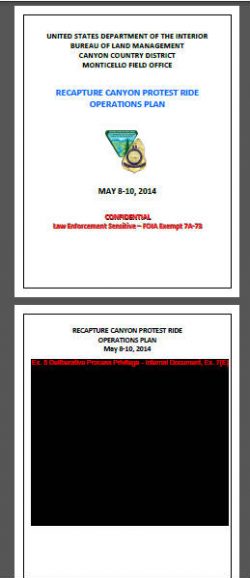
At other times, a BLM official’s intra/inter-agency emails referred to attached documents, but those documents were usually not included in the information BLM sent me. Emails like that simply increased the number of pages BLM sent me, without providing an iota of real information.
Still, after spending hours and hours examining these mostly irrelevant or redundant documents, I was able to find some correspondence that at least provided a glimpse into the operations of the Bureau of Land Management as they prepared for the Recapture protest ride, and their efforts to monitor and anticipate Lyman’s motives and actions. One thing is clear from the BLM’s point of view—the last minute insertion of the “Bundy Factor” played a major role in the events of 2014. Without that hiccup, things would no doubt have turned out differently on May 10, 2014…
Follow these links to examine Part 1 of the “Recapture Documents”:
The BLM/FOIA Recapture Documents, part 1: March 21 to April 28, 2014
The BLM/FOIA Recapture Documents, part 1: May 2 to May 8, 2014
The BLM/FOIA Recapture Documents, part 1: May 8 to May 14, 2014
—
—
Jim Stiles is Founder and Co-Publisher of the Canyon Country Zephyr.
To comment, scroll to the bottom of the page.
Don’t forget the Zephyr ads! All links are hot!
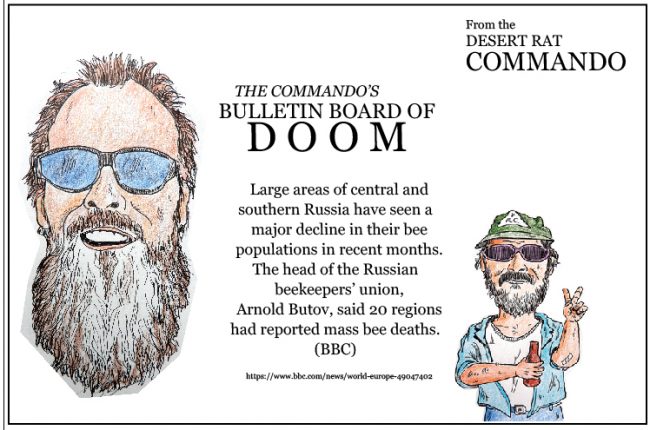
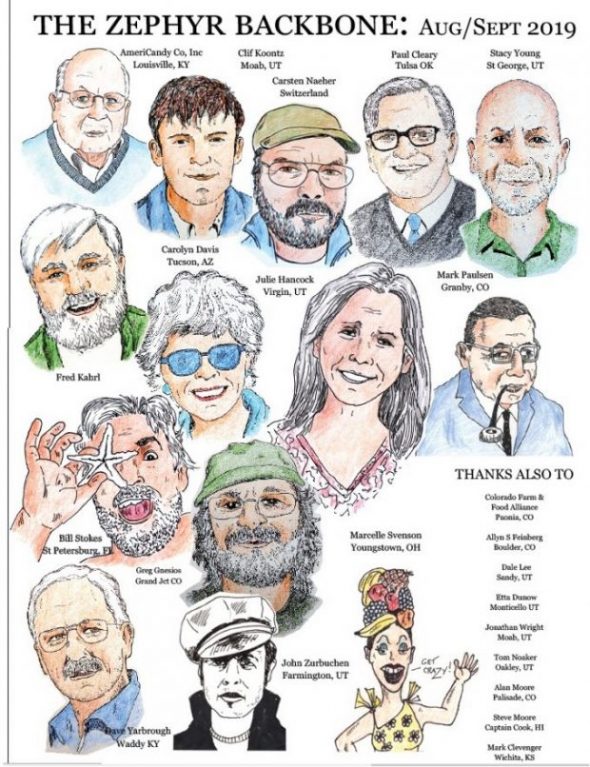









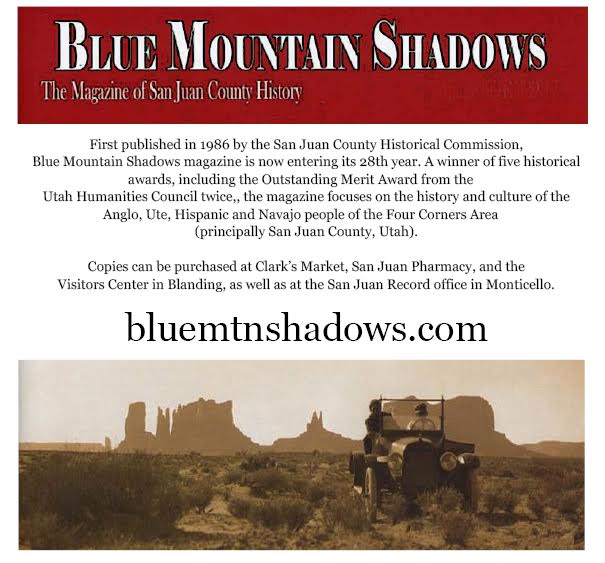
Thank you for being here. I have been fighting to keep roads open in California and Utah for about 54 years and appreciate what you have done. Why can’t we sue like Suwa does I know they have a $500,ooo budget and a $100,000 lawyer but is money the only answer? What did it cost you to file your FOI? Will send $100 to help.